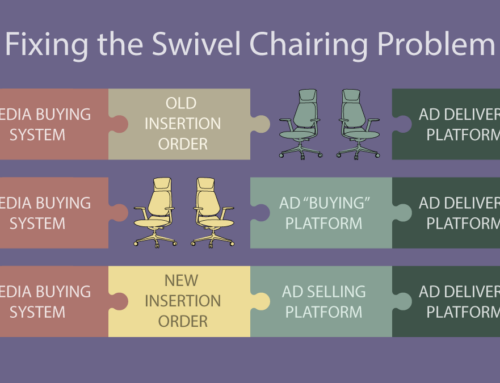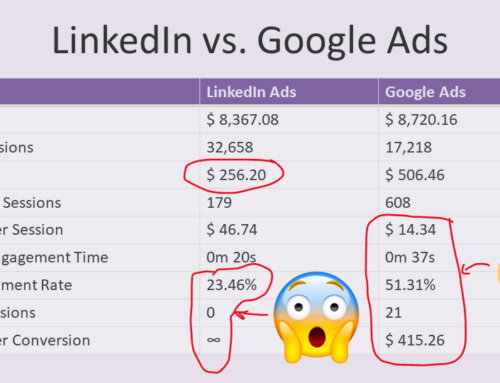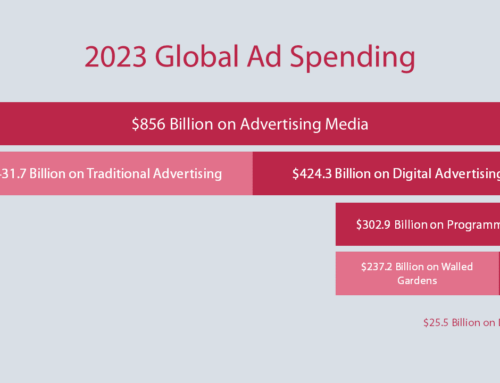When you are selling anything, it’s really easy to get caught up in pitching the benefits of your product, and ad technology is no different. Some of today’s new programmatic direct marketing solutions promise to change the very nature of how media buyers and sellers spend their time. Demand side systems are focusing on replacing Excel and e-mail with web-based, centralized systems that take the manual grunt work out of buying. Supply-side systems are tying into publisher ad servers to help create more streamlined access to inventory, without the hassles of secure it via paper insertion orders. While it’s easy to focus on all of the amazing efficiency benefits offered by today’s web-based solutions, it’s also critical to remember to ask your client what’s important to them.
On a recent sales call to a large agency, my old-school sales training kicked in. After showing off all of the neat bells and whistles of my software, I asked the company’s Chief Digital Officer why my ad technology was interesting to his agency. What he said was simple, but illustrative: “Our clients don’t ever come to us and ask what kind of tools we are using to do our jobs. They really couldn’t care less. But they do come to us and ask for huge media recommendations, due within several hours. And they definitely want to know why we are recommending what we are recommending.”
This made a lot of sense. Nobody wants to see the sausage get made, but it had better taste good once it’s cooked. Over the course of our conversation, I took away a few key nuggets that would be valuable for any technology company looking to sell programmatic solutions to marketers and publishers alike.
Clients Care about “Why,” not “How”
This statement is true for both agencies and publishers. An agency’s big client doesn’t care what tools the agency uses to create and execute its media plans (as long as the cost is transparent and within reason), but it does want to understand the overall strategy, rationale behind its vendor choices, and (of course) obtain measureable results. On the publisher side, the clients acquiring the inventory don’t care what kind of tags or datasets produce a targetable audience—they just want the publisher’s “auto intenders” to see ads for their cars.
In both cases, the “how” doesn’t matter—nor should it. Programmatic done right hides the way the sausage is made, and offers simple controls over complex processes. The best companies in the space will be able to turn a sound engineer’s control board (thousands of knobs and switches) into Avid’s Pro Tools. This is particularly important when trying to scale an organization; it is the difference between trying to turn dozens of people into technicians and having a technical system that everyone can use with little training. Companies with the right, scalable technology can grow…and grow fast.
For my agency client, being able to tell his client how he selected the programs on his media recommendation was critical. Using software that could help his planning team make choices based on past performance, alignment with demographic data, or even the client’s first party data was the key. When you have 40 20-something media planners spending millions of dollars, data-driven guidelines are essential, along with the platform to generate them. Likewise, on the publishing side, publishers need to tell their agency clients why certain programs were recommended, and have a systematic way to put together inventory packages that will perform well enough to avoid the dreaded out-clause.
Speed Matters
Another thing the agency CDO told me was how important speed was. They say efficiency doesn’t sell, but when your client is looking for a thoughtful media recommendation in two hours, being able to deliver a plan you can justify means having the tools to move fast, and move smartly. “It’s hilarious to me that our clients ask us for a completely unique, groundbreaking idea—at 6:30 PM—and expect something the next day.” This rolls down the hill to publishers, who are ultimately asked to help contribute to such plans on even shorter notice. Although there’s no cure for overly demanding clients, there is starting to be new programmatic direct solutions that help take some of the viscosity out of the transactional RFP funnel, increasing the speed to which proposals can come to market.
No Data, No Strategic Advantage
“Big Data” is all the rage, but even relatively small data can be the key to success when it comes to digital media buying and selling. “We know that every plan is going to have Facebook, AOL, and Yahoo on it. Access to their inventory and securing it is not the problem,” the agency CDO told me. “The real problem is, how do I know how much to allocate to each? What should my media channel mix be? That’s what we struggle with. Oftentimes, it comes down to gut instinct.”
Right now, data that can help with making those allocations is hidden all over the place: Excel-based media plans and performance reports, ad serving data that’s hard to report on, audience verification data from measurement tools, and in the brains of media supervisors. This structured data, centralized in the right place, can mean the difference between creating accessible insights—or being just another 10 gigabytes sitting on a computer’s hard drive. Agencies should be able to query all of the data available to them programmatically, and offer media choices chosen from algorithms that get smarter every time a campaign is run. Likewise, publishers should be able to systematically recommend inventory packages based on past performance, demographic and contextual relevance—and even whether or not they were re-purchased over time.
Programmatic direct solutions are starting to bring the type of data-driven efficiency once only found in RTB to both advertisers and inventory owners, creating a more “bionic” dynamic, where humans leverage technology to be better, faster, and smarter.
This post originally appeared in AdExchanger.





